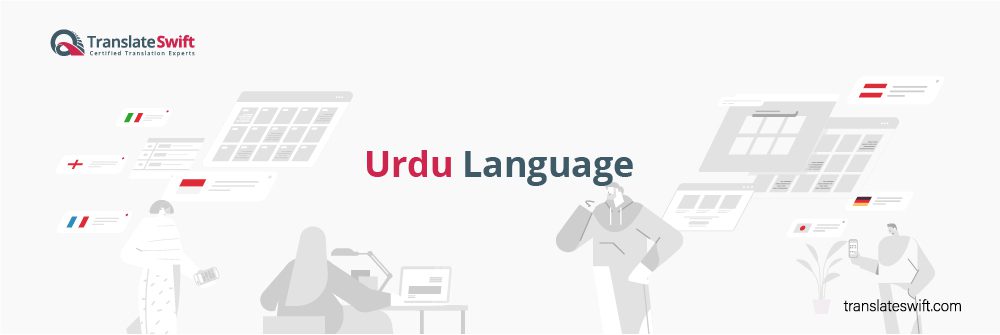
Urdu‘s journey unfolds against the backdrop of the vast and diverse Indian subcontinent. Here it emerges as a testament to the intricate interplay of cultures and languages. Its origins lie within the expansive Indo-European linguistic family. This is indeed a vast and varied linguistic landscape. It encompasses a multitude of languages spoken across Europe, Iran, and the Indian subcontinent.
Urdu traces its roots to the fertile plains and river valleys of ancient India. The language’s development was also profoundly influenced by the rich tapestry of cultures that thrived in the region. Waves of migration, conquest, and trade swept across the subcontinent. These brought with them a kaleidoscope of linguistic and cultural influences, each leaving its mark on the evolving language.
Urdu’s journey began to take shape during the medieval period. The vibrant cultural milieu of the Mughal Empire provided fertile ground for linguistic synthesis and cultural exchange. It was during this time that Urdu began to emerge as a distinct language. Blending elements of Persian, Arabic, Turkish, and indigenous Indian languages in creating a rich and expressive linguistic tapestry.
Origins and Evolution
The language flourished in the royal courts, bustling markets, and vibrant literary circles of Mughal India. It served as a medium of communication and artistic expression among people from diverse backgrounds. As Urdu continued to evolve and mature, it became the language of poetry, literature, and administration. Thus, reflecting the cosmopolitan ethos and cultural sophistication of the era.
Rooted in the cultural landscape of the Indian subcontinent, Urdu became a symbol of unity and shared identity among the diverse communities that called the region home. Its flexibility and adaptability allowed it to transcend geographical and linguistic boundaries. It helped in forging connections and fostering understanding among people from different walks of life.
Poetic Tradition and Literary Splendor
Urdu’s poetic tradition lies at the heart of its cultural heritage, with poets like Mir Taqi Mir and Mirza Ghalib crafting verses that resonate with themes of love, spirituality, and societal commentary. The Urdu script, derived from the Persian script, adds to the language’s aesthetic allure, elevating the visual beauty of its literature and calligraphy. With its graceful curves, flowing lines, and intricate flourishes, Urdu calligraphy transforms the written word into a work of art, capturing the essence of the poet’s emotions and the essence of the language itself.
Cultural Significance and Global Reach
As the official language of Pakistan and one of India’s scheduled languages, Urdu serves as a unifying force among diverse communities across South Asia. Its influence extends beyond borders, permeating literature, music, and film, and captivating audiences worldwide with its timeless beauty and emotional depth.
At TranslateSwift, we offer comprehensive translation services tailored to bridge linguistic divides and foster connections with the Urdu-speaking world. Our dedicated team ensures accurate, reliable, and culturally sensitive translations, facilitating seamless communication across languages and cultures. Whether you seek Urdu to English translation or vice versa, we navigate the nuances of the language with expertise and finesse.
Other Languages
- English
- Spanish
- German
- Dutch
- French
- Italian
- Afrikaans
- Albanian
- Amharic
- Arabic
- Armenian
- Azerbaijani
- Basque
- Belarusian
- Bengali
- Bosnian
- Bulgarian
- Cantonese
- Catalan
- Cebuano
- Chichewa
- Chinese - Simplified
- Chinese - Cantonese
- Chinese - Traditional
- Chinese - Mandarin
- Corsican
- Croatian
- Creole
- Czech
- Danish
- Dari
- Esperanto
- Estonian
- Farsi
- Filipino
- Finnish
- Frisian
- Galician
- Georgian
- Greek
- Gujarati
- Haitian Creole
- Hausa
- Hawaiian
- Hebrew
- Hindi
- Hmong
- Hungarian
- Icelandic
- Igbo
- Indonesian
- Irish
- Japanese
- Javanese
- Kannada
- Kazakh
- Khmer
- Korean
- Kurdish
- Kyrgyz
- Lao
- Latin
- Latvian
- Lithuanian
- Luxembourgish
- Macedonian
- Malagasy
- Malay
- Malayalam
- Maltese
- Maori
- Marathi
- Mongolian
- Montenegrin
- Myanmar
- Nepali
- Norwegian
- Odia
- Pashto
- Persian
- Polish
- Portuguese
- Punjabi
- Romanian
- Russian
- Samoan
- Scots Gaelic
- Serbian
- Sesotho
- Shona
- Sindhi
- Sinhala
- Slovak
- Slovenian
- Somali
- Sundanese
- Swahili
- Swedish
- Tajik
- Tagalog
- Tamil
- Telugu
- Thai
- Turkish
- Ukrainian
- Urdu
- Uyghur
- Uzbek
- Vietnamese
- Welsh
- Xhosa
- Yiddish
- Yoruba
- Zulu
